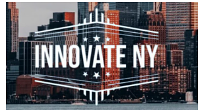
NYC Tech Ambitions Face Scrutiny as Mayoral Candidate Ties Plan to Super PAC Funding
A $2.8 billion plan to establish NYC as a tech hub is raising questions about political motivations and funding sources, revealing close ties between a Super PAC, a mayoral candidate, and international partnerships.
NYC Tech Ambitions Face Scrutiny as Mayoral Candidate Ties Plan to Super PAC Funding
NEW YORK, NY – October 30, 2025 – A sweeping $2.8 billion proposal to transform New York City into a leading global hub for blockchain and artificial intelligence is under scrutiny, with questions arising about the plan's origins, funding, and its close connection to a Super PAC supporting a prominent mayoral candidate. Innovate NY PAC unveiled the initiative, centered around a massive STEM facility, expanded job training, and a digital storytelling ecosystem, but a deeper investigation reveals a complex web of financial ties and potential conflicts of interest.
A Bold Vision and a Questionable Funding Source
Innovate NY PAC’s plan promises to inject billions into the city's economy, create tens of thousands of jobs, and establish New York as a premier destination for tech innovation. The centerpiece is a proposed 2.3 million square foot STEM facility, which the PAC claims would be the largest of its kind in the US. The plan also emphasizes workforce development, aiming to enroll 50,000 students in certification programs annually by 2026. However, the announcement was immediately linked to the mayoral campaign of Andrew Cuomo, raising concerns about whether the initiative is driven by genuine economic development goals or political maneuvering.
“The scale of the investment is substantial, and the timing is undeniably linked to the mayoral race,” noted one industry analyst. “It begs the question of whether this is a sincere effort to bolster the city’s tech sector, or a strategic attempt to influence voters.” Innovate NY PAC’s funding sources are proving to be a focal point of inquiry. While legally operating as an independent expenditure committee, the PAC has received significant contributions from entities like Angel 501 LLC and Put NYC First, Inc. These contributions, coupled with the explicit endorsement of Cuomo, have prompted scrutiny from campaign finance watchdogs.
“Super PACs are allowed to spend unlimited amounts of money to support or oppose candidates, but the level of coordination between the PAC and the campaign is a major concern,” said one campaign finance expert. “The fact that this plan directly benefits Cuomo’s campaign raises red flags about potential violations of campaign finance laws.”
International Partnerships and Potential Conflicts
Beyond the domestic funding, Innovate NY PAC’s plan includes a significant international partnership with Hekima University in Kenya. While proponents tout the collaboration as a means of fostering global research and providing educational opportunities, a closer examination reveals potential conflicts of interest. Eddie Cullen, the Chair of Innovate NY PAC, also serves as the CEO of Crescite Innovation Corporation, which has a direct agreement with Hekima University to build a new blockchain-focused campus in Kenya.
“The connection between the PAC’s chair, the university partnership, and the planned campus in Kenya is deeply concerning,” said one source familiar with the deal. “It raises questions about whether this is a legitimate effort to promote international collaboration, or a self-serving deal designed to benefit Cullen’s company.” The partnership is projected to generate $300 million in international education and research revenue over five years, but critics argue that the benefits may not be evenly distributed. Hekima University’s existing engagement with AI and research, demonstrated through initiatives like its 2023 Research Week, underscores its commitment to innovation. However, the financial arrangements and potential profit motives of Crescite Innovation Corporation require further scrutiny.
Assessing the Scale and Realism of the Plan
While the vision for a cutting-edge STEM facility and a thriving tech ecosystem is appealing, the feasibility of the plan is being questioned. The claim that the proposed 2.3 million square foot facility would be the largest in the US is ambitious, requiring a significant investment and logistical undertaking. While numerous universities have invested heavily in STEM infrastructure, and facilities like Northwestern’s Simpson and Querrey Biomedical Research Center are substantial, determining the true “largest” facility requires a comprehensive comparison of gross square footage data.
Furthermore, the projected $2.8 billion annual economic output and 62,000 new jobs over ten years appear optimistic, given the current economic climate and the highly competitive nature of the tech industry. NYC's tech sector is already a global powerhouse, with over 25,000 startups and significant venture capital investment. The plan’s success will depend on attracting and retaining top talent, securing adequate funding, and navigating the complex regulatory landscape. One industry insider commented, “The city’s tech ecosystem is already thriving, but this plan needs to offer something truly unique to stand out. It can’t just be more of the same.”
The initiative aligns with NYC’s existing trajectory and potential in these sectors, given the recent increase in VC funding and job postings within the AI and blockchain space. However, whether the plan’s projections are realistic remains to be seen. The economic viability of the project will likely hinge on the ability to attract private investment and forge strategic partnerships with established tech companies.
